
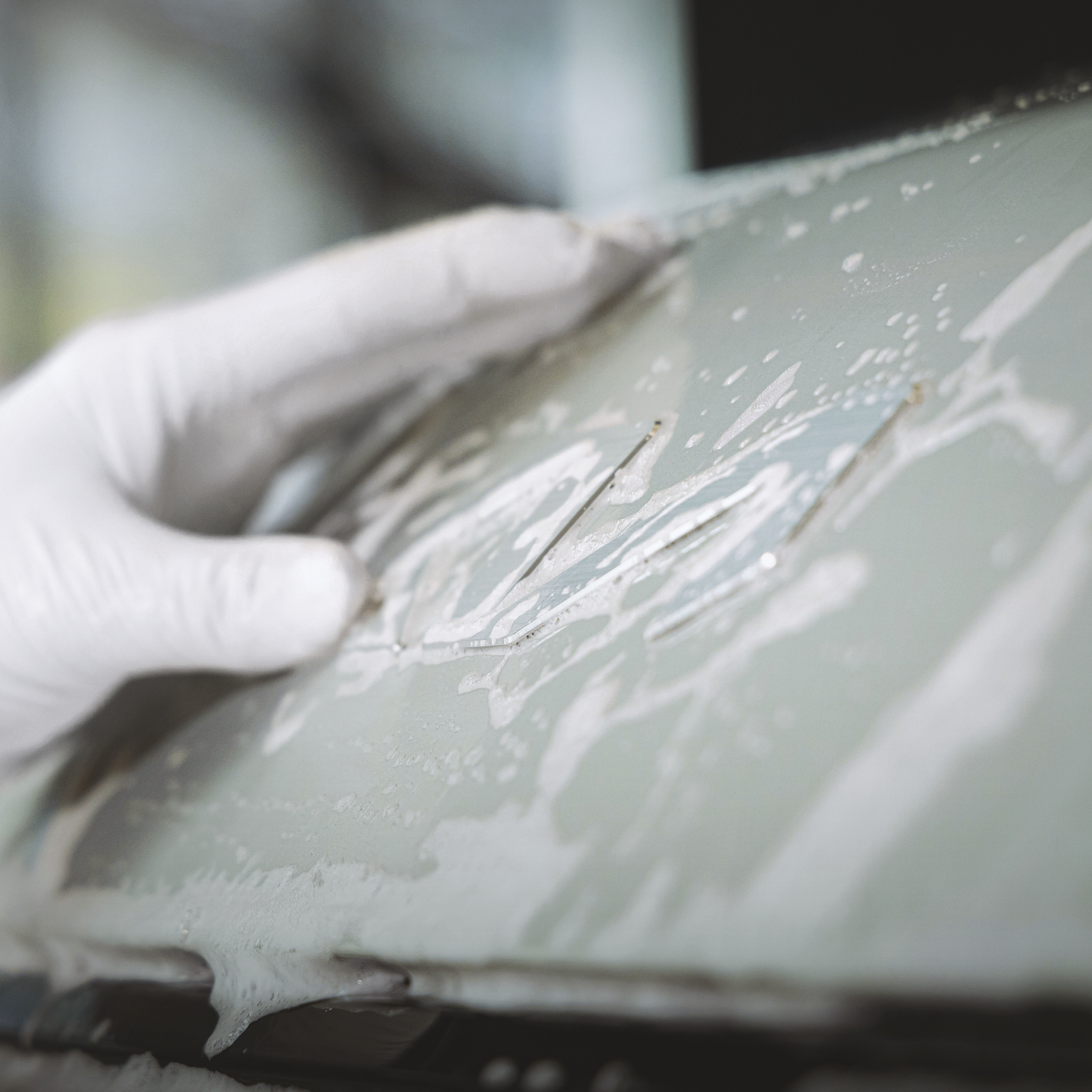


2025.03.06 Kia
Many of Hyundai Motor Group’s latest vehicles offer matte finishes to convey both strength and sophistication. These finishes create dynamic hues and subtle shifts in tone depending on the lighting. Under bright illumination, they highlight a bold, sporty character, while in lower light, they exude a modern and refined elegance.

Obviously, matte finishes stand out with their unique appeal, but they are often seen as difficult to maintain. Is this concern warranted? Let’s take a closer look at what sets matte paint apart and how to care for it properly.

As is well known, matte finishes differ from glossy ones in the composition of their clear coat (transparent paint sealant). The colors we perceive are determined by how light waves are reflected in varying proportions. A glossy finish is achieved when light is reflected uniformly (specular reflection), whereas a matte finish is created by minimizing this reflection.

Matte finishes are created by mixing additives into the clear coat, forming countless microscopic irregularities on the paint surface that scatter light in multiple directions—a phenomenon known as diffuse reflection. This scattering not only reduces gloss but also evenly distributes reflected light, giving matte finishes a softer, more visually balanced appearance compared to glossy ones. The result is a uniquely refined aesthetic with a deep and sophisticated ambiance.
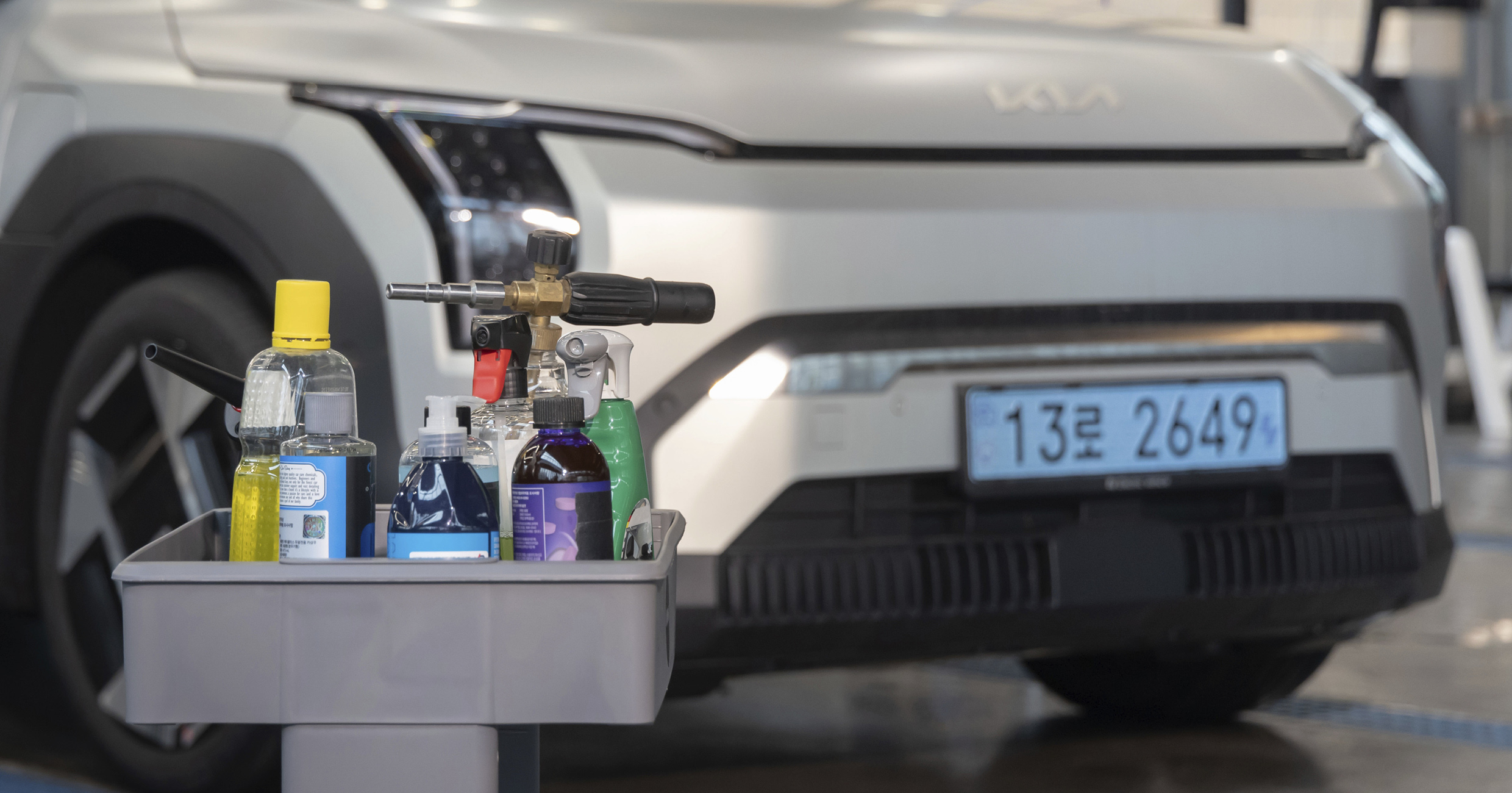
The key to maintaining a matte-colored vehicle is preserving the integrity of its clear coat. This is why it is essential to use car care products specifically designed for matte finishes. Traditional coatings, for instance, are formulated to enhance gloss. When applied to a matte surface, they can seep into the microscopic irregularities of the clear coat, creating unwanted shine—an outcome that may be unacceptable to those who appreciate a flawless matte finish.
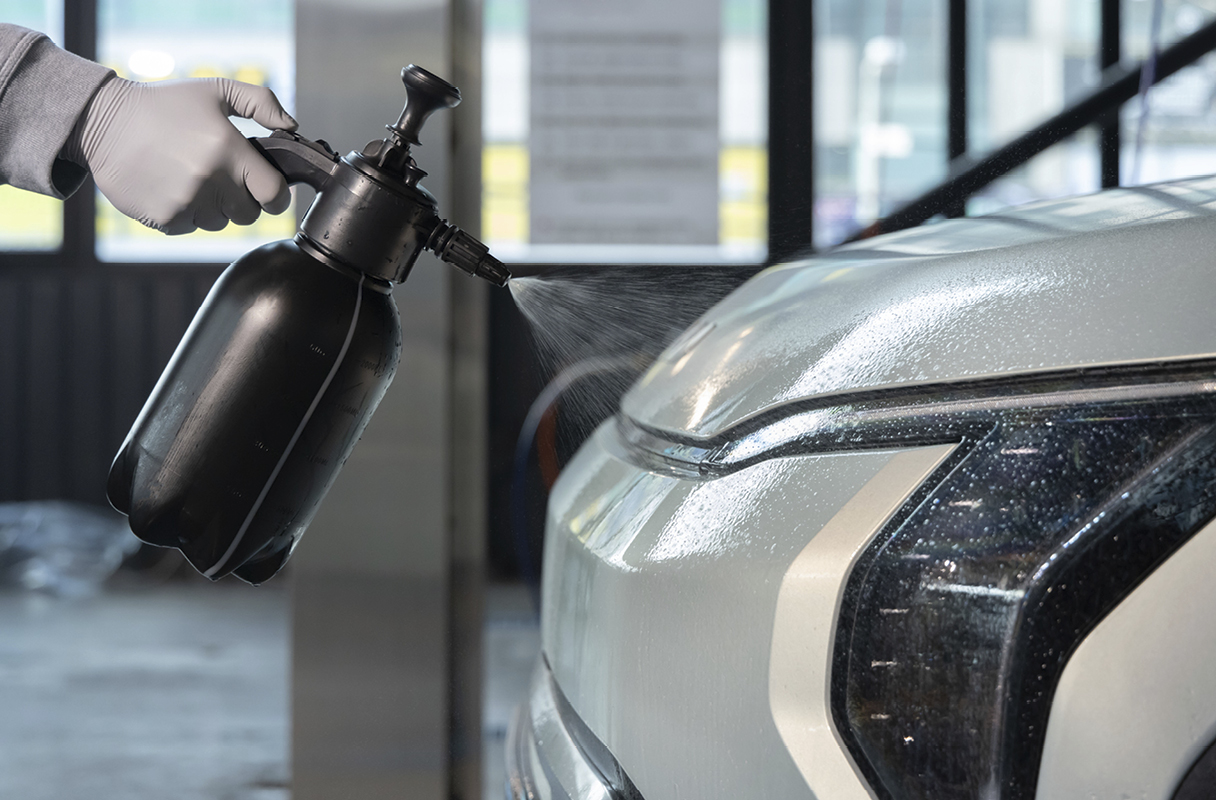
Regular washing is the most effective way to keep a vehicle’s paint clean and well-maintained, regardless of its color. This becomes even more crucial in winter, as ice, road salt, and other harmful elements pose a greater risk to the paint. To minimize their impact and protect the surface during colder months, it is essential to remove contaminants early in the cleaning process. This is where the pre-wash plays a vital role—the initial step that gently rinses away surface dirt, preventing it from causing scratches during the main wash.
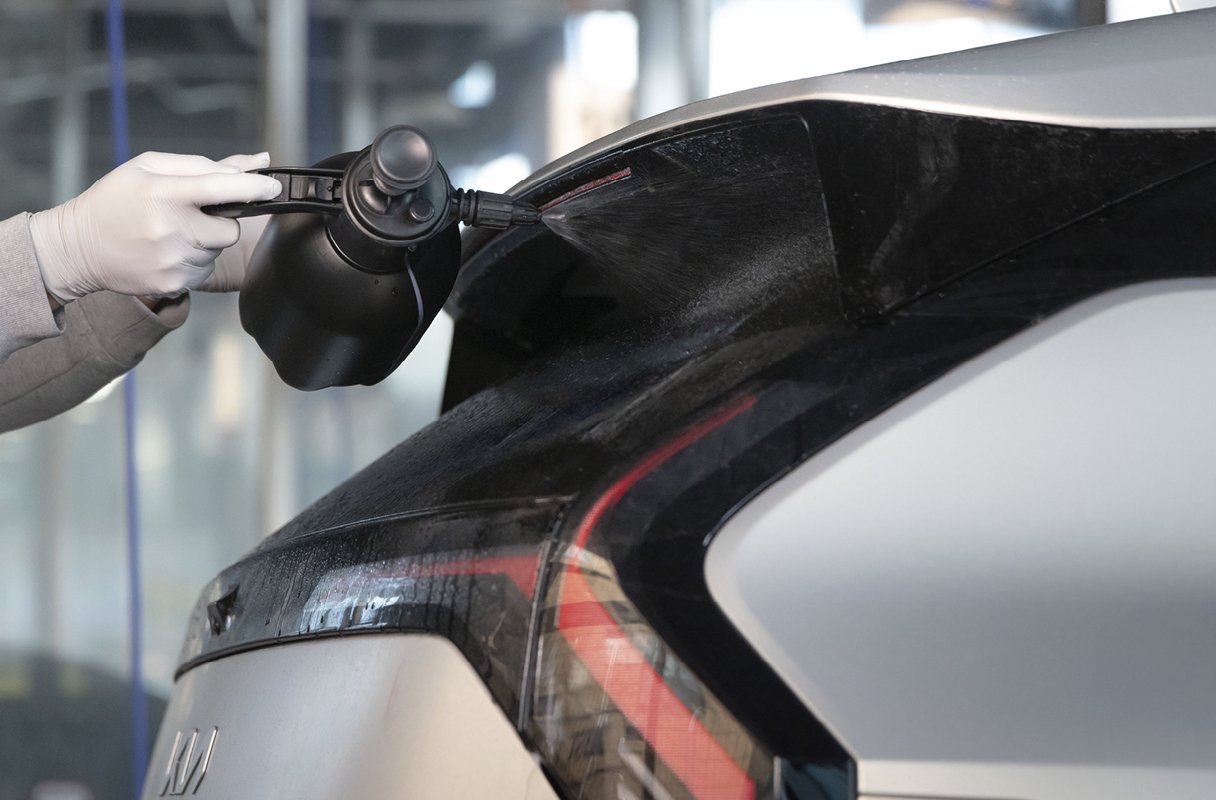
If the vehicle is only lightly soiled, spray a pre-wash shampoo or multi-purpose cleaner onto the surface and rinse it off with high-pressure water. However, if there is a significant buildup of dirt or sand, rinse the surface first to prevent scratches before proceeding with the pre-wash. Always dilute the cleaning solution with water and apply it evenly from top to bottom for thorough coverage. After application, let it sit for one to two minutes to loosen contaminants before rinsing off the detergent completely with high-pressure water. For heavier contamination, applying a layer of snow foam before rinsing can further enhance cleaning effectiveness.
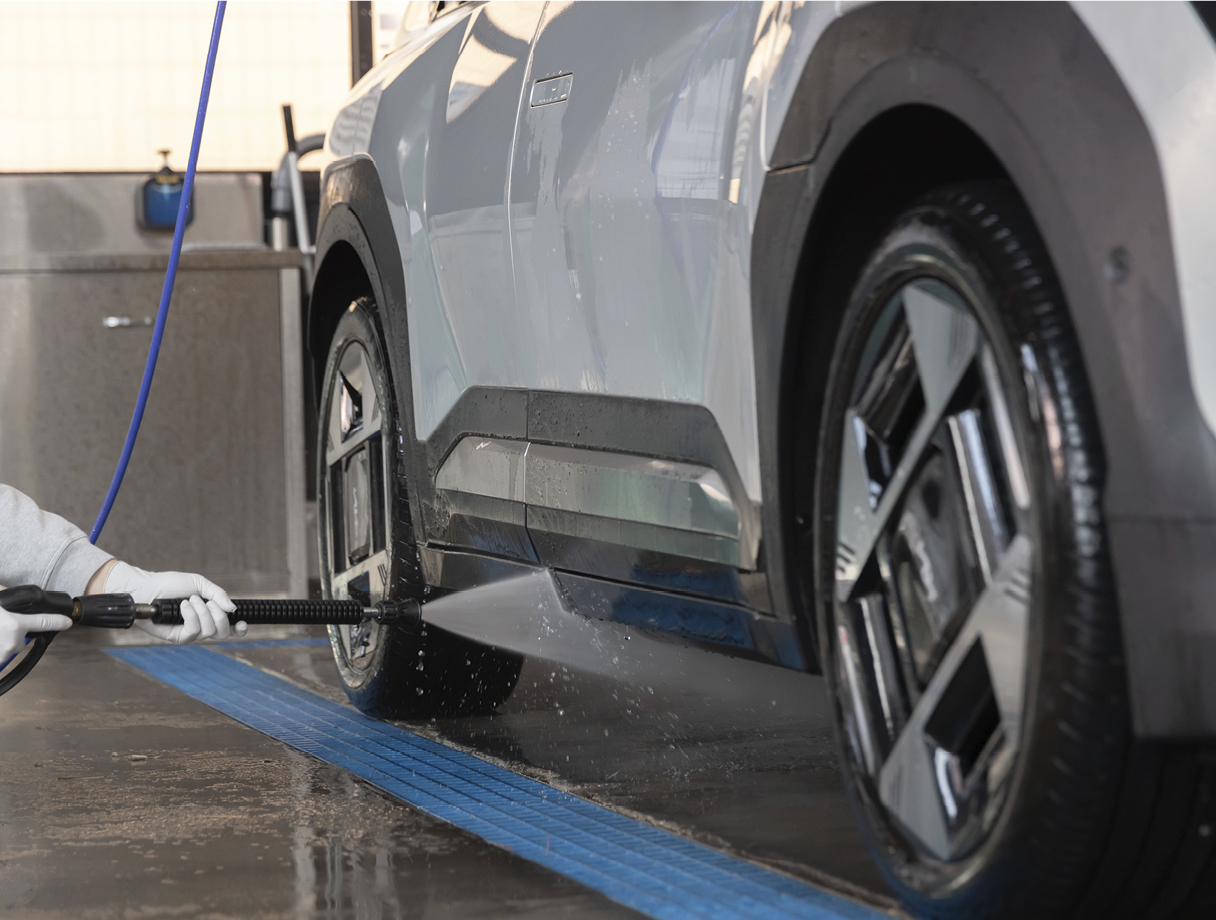
Although skipping the pre-wash step will not significantly affect the washing process, it is highly recommended for those seeking a thorough cleaning. Removing a large portion of contaminants beforehand not only makes the main wash easier but also minimizes the risk of dirt and sand particles getting trapped in a wash mitt or pad, which could scratch the paint. For matte-colored vehicles, minor imperfections like swirl marks may be less noticeable, but any scratches that do form are much more difficult to remove. This is why pre-washing is a crucial step in properly maintaining a matte finish.
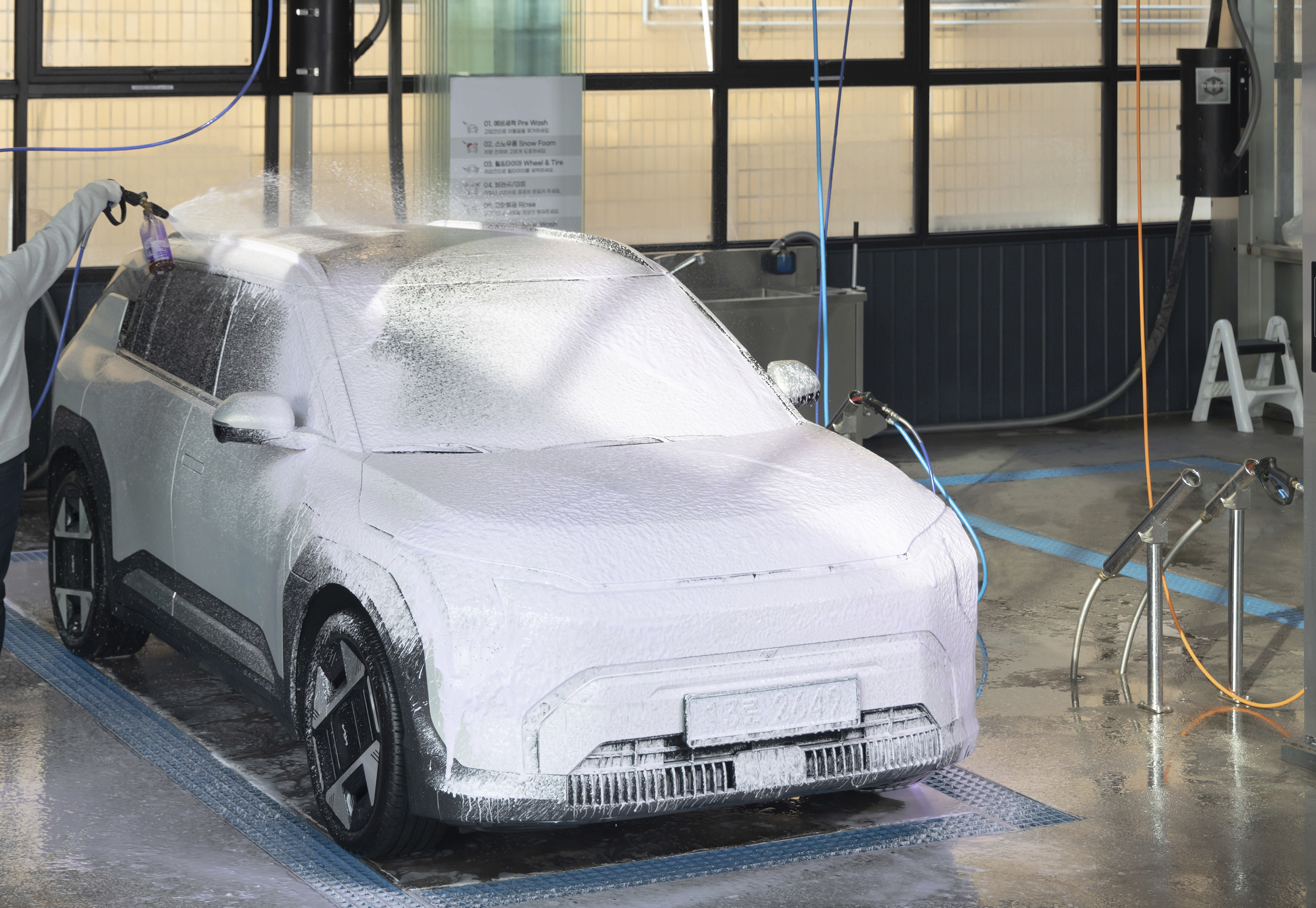
The main wash involves applying a foam-based cleaner, such as snow foam, to the entire vehicle to further loosen contaminants, while car shampoo and a wash pad are used to clean the surface directly. Since this step requires direct contact with the paint, it is considered the most essential stage of the washing process.
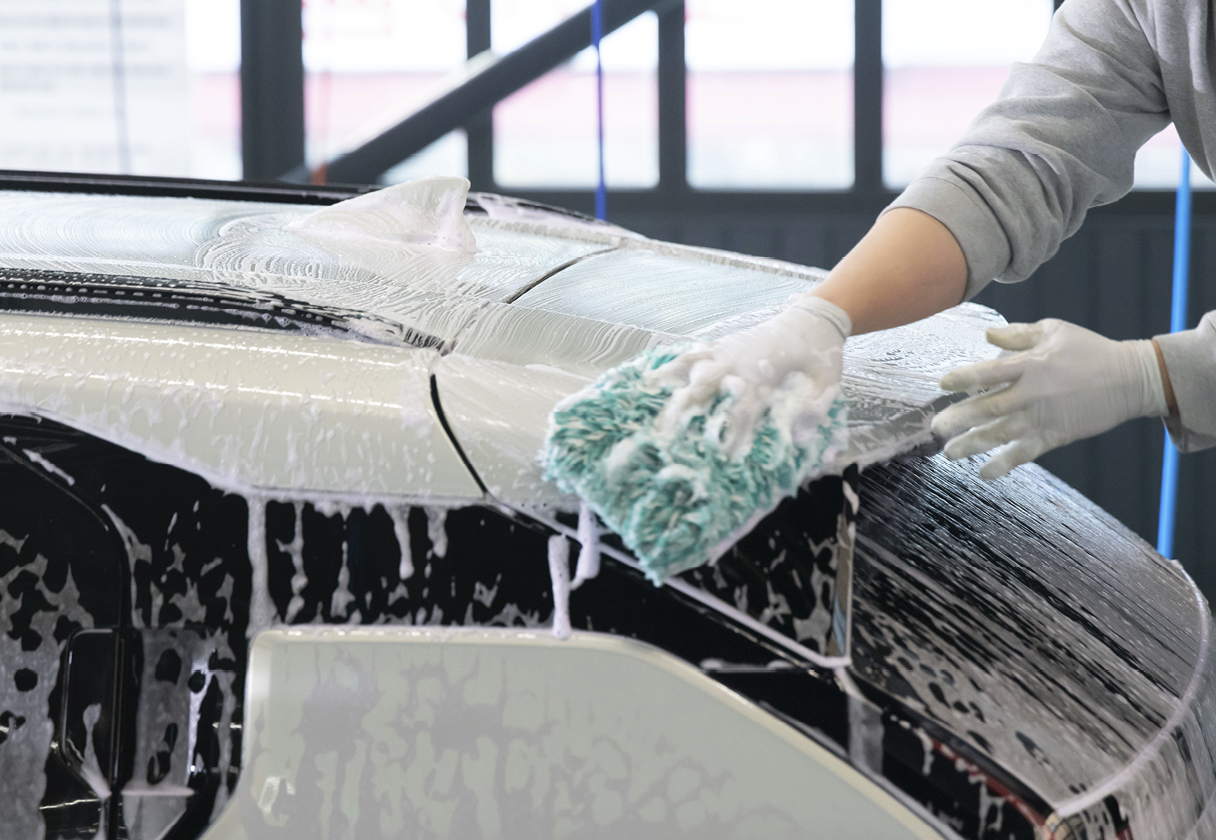
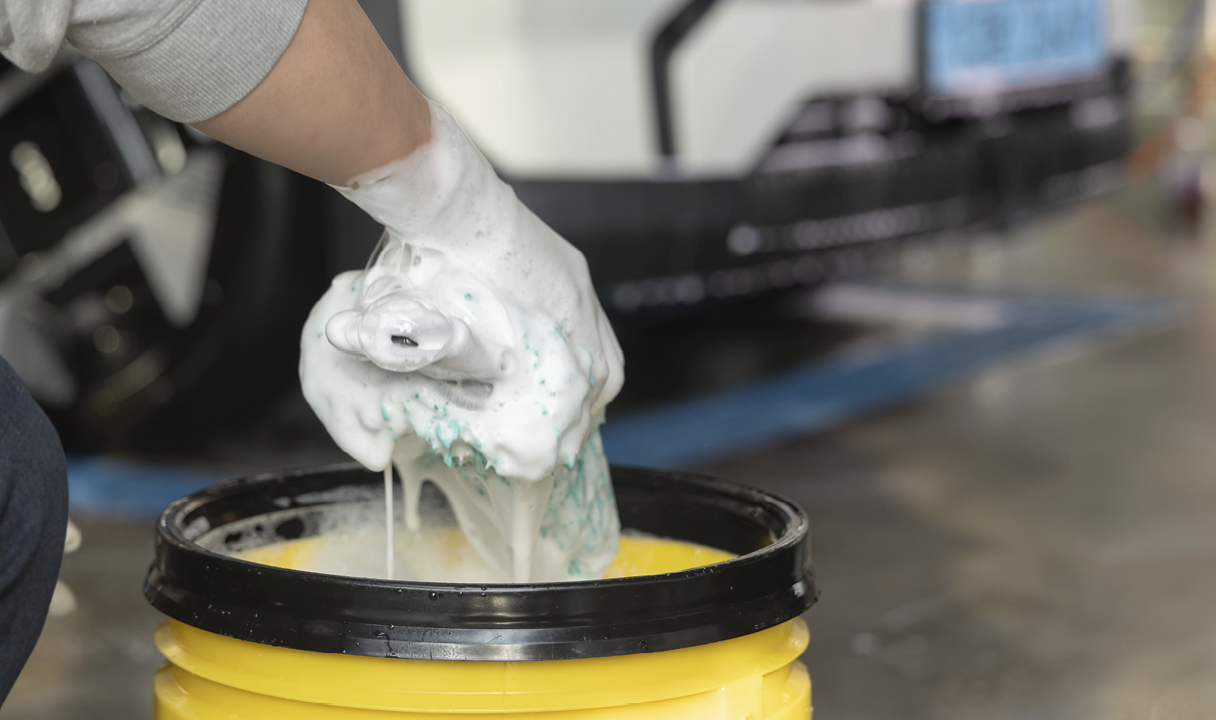
For the main wash, it is highly recommended to use a car shampoo specifically formulated for matte finishes. Many standard car shampoos contain gloss-enhancing agents, which may not be suitable for matte surfaces. In contrast, matte-specific shampoos offer superior lubrication to minimize the risk of scratches and swirl marks while also preventing water stains and streaks, ensuring a clean and uniform finish.
The process begins by evenly applying snow foam from the roof downward. Thanks to its adhesive properties, the foam slowly cascades down, lifting dirt and grime along the way. Afterward, thoroughly soak a wash pad with diluted car shampoo and gently wipe the surface. Avoid applying excessive pressure when using the wash pad; instead, let it glide smoothly across the surface. For stubborn stains, use a cleaner specifically formulated for the type of contamination rather than scrubbing forcefully.
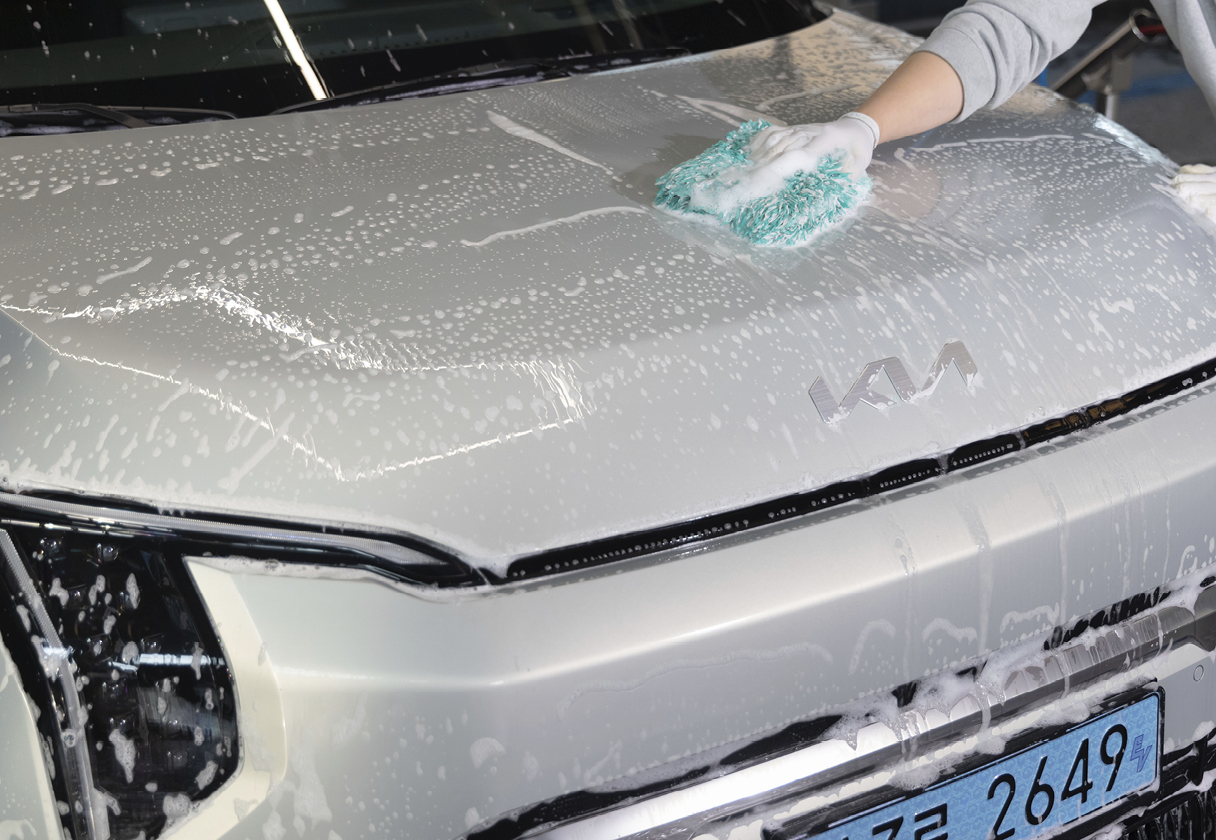
Since the lower part of the vehicle collects more dirt and larger particles, it is recommended to use an additional wash pad specifically for the lower sections, separate from the one used for the upper areas. Furthermore, each pad should be thoroughly rinsed after cleaning a section to remove any remaining contaminants before using it again, preventing potential scratches on the paint. For intricate details such as emblems, where a wash pad may be less effective, a soft brush or even a fingertip can help remove dirt more effectively.
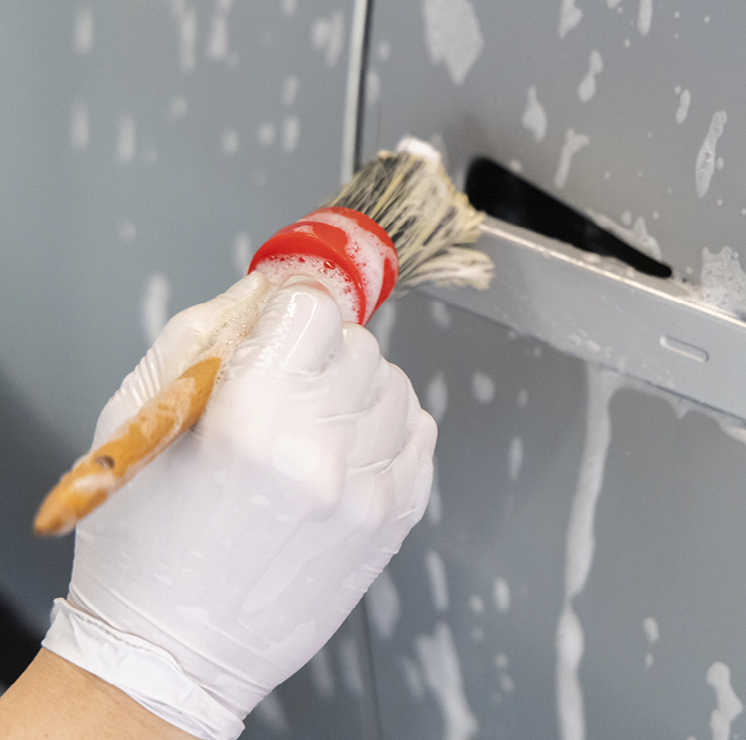
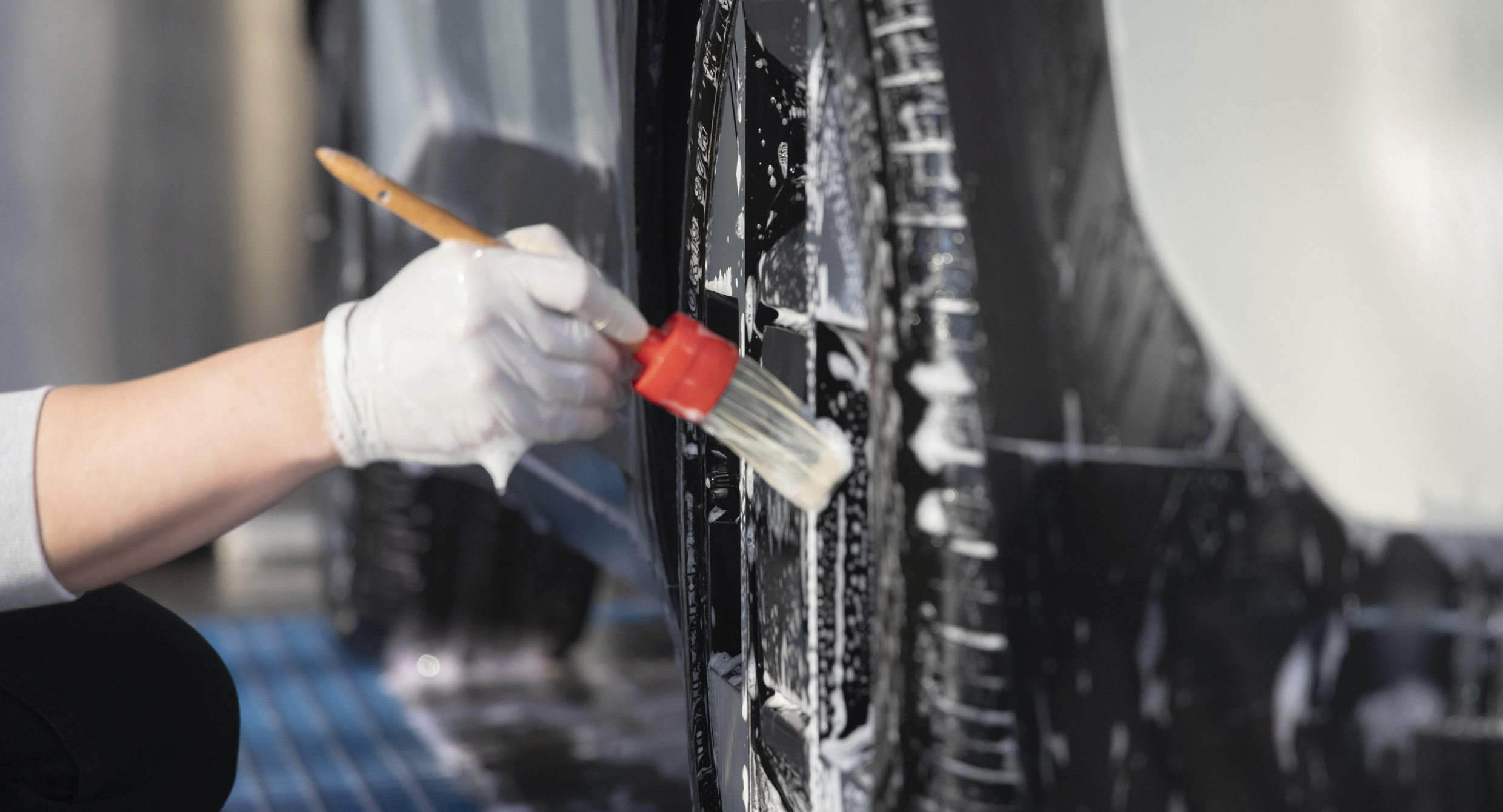
Once the vehicle’s exterior has been cleaned, the next step is to focus on the wheels and tires—the dirtiest parts of the car. Constant exposure to dirt, mud, and snow, combined with the heat generated during driving, makes them prone to accumulating brake dust and stubborn grime. This is why brushes are the preferred tool for cleaning them. During the main wash, pre-spraying snow foam and car shampoo on the wheels and tires helps loosen contaminants. However, if there is a significant buildup of brake dust, using a dedicated wheel cleaner is recommended for more effective cleaning.
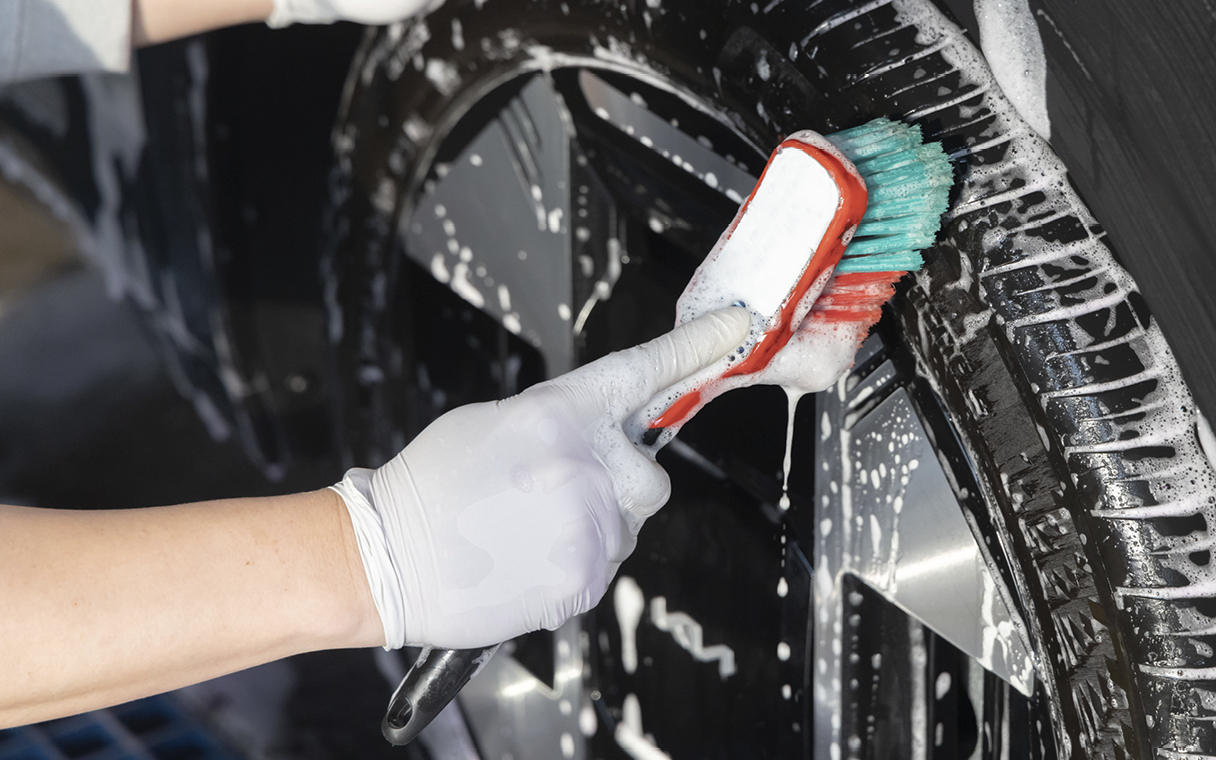
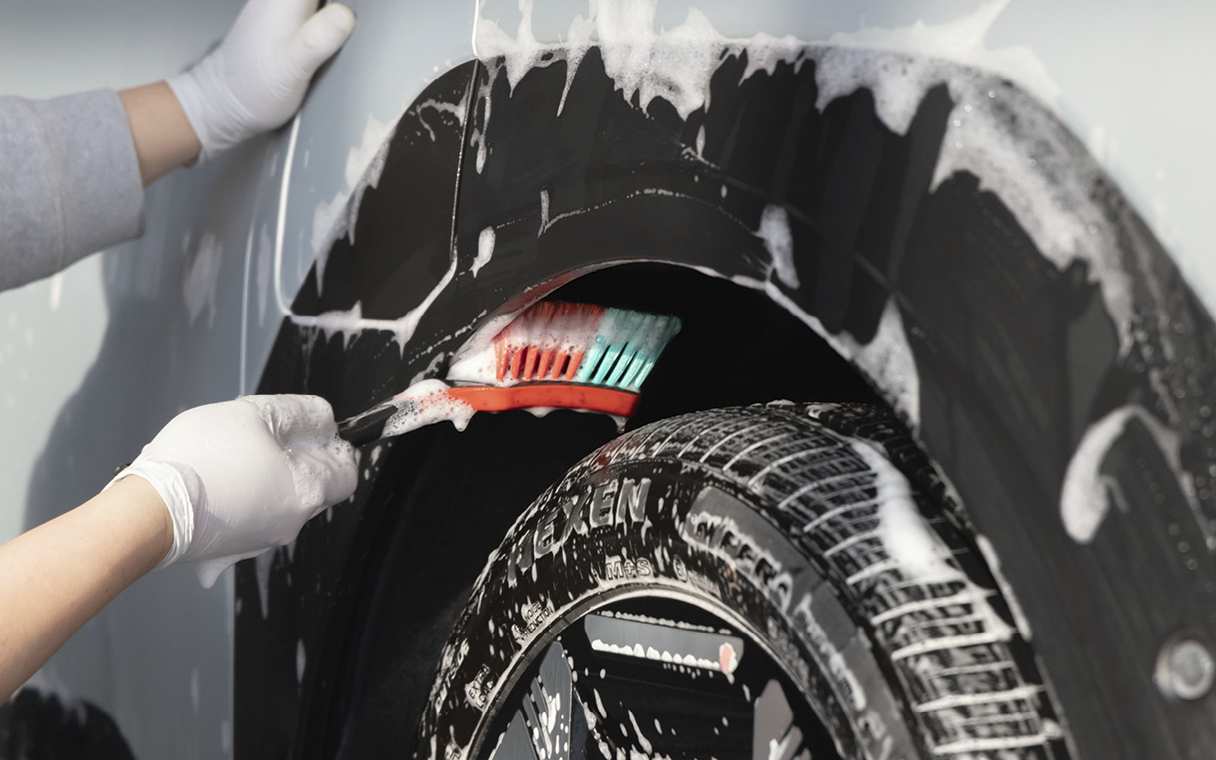
When brushing the wheels, it is also best to clean the tires. Over time, the protective compounds in tires that prevent cracking can degrade, causing the rubber to develop an unsightly brown tint. While this does not affect performance, regularly scrubbing the tires with a plastic brush and applying a tire dressing helps maintain their sleek, deep-black appearance, keeping them looking like new.
A plastic brush is also an excellent tool for cleaning wheel wells, which accumulate just as much dirt and debris as tires. Spraying a multipurpose cleaner or a dedicated wheel cleaner and scrubbing with a brush effectively removes contaminants. However, for matte-finished vehicles, it is crucial to prevent the brush from making contact with the paint, especially if it has stiff bristles. Scratching the textured clear coat could leave behind unwanted glossy patches.
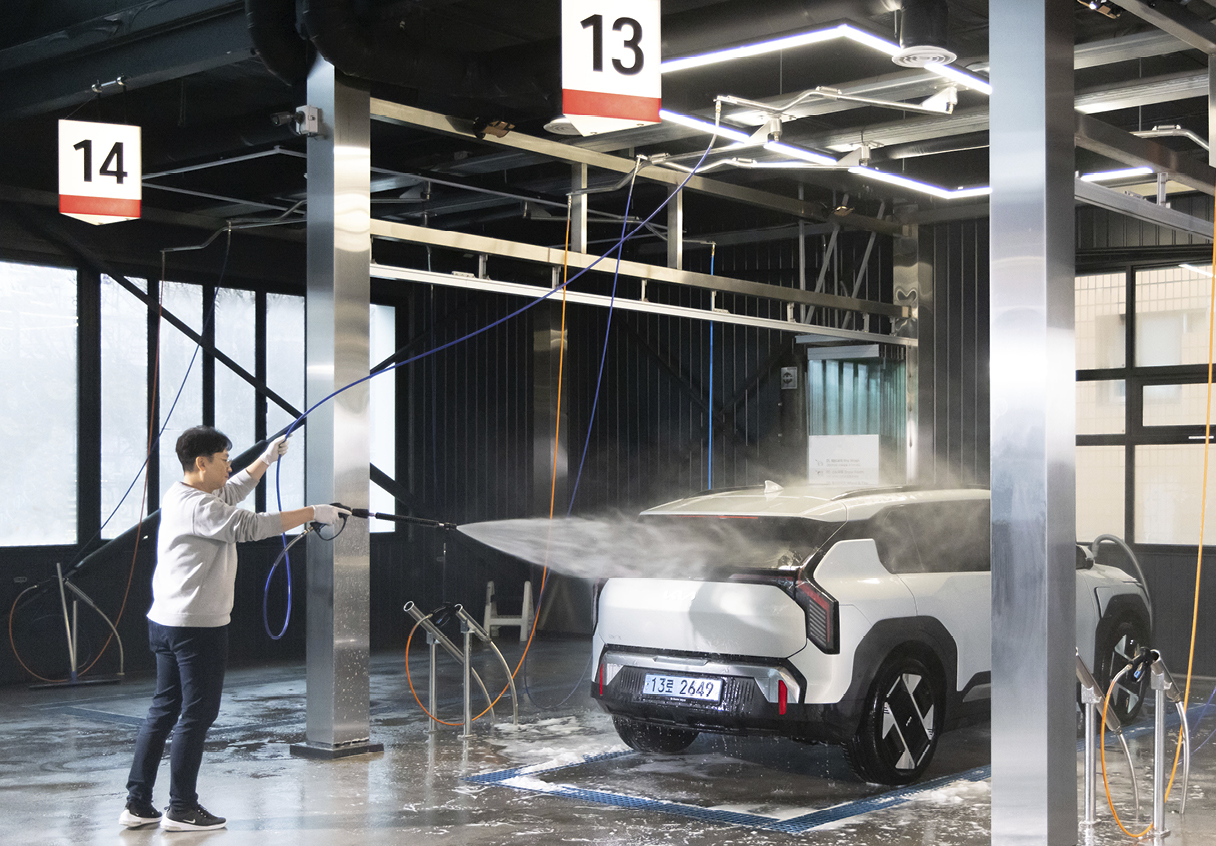
The final step is to carefully rinse the entire vehicle with high-pressure water, starting from the roof and working downward. To prevent the hose from touching the body and potentially scratching the paint, hold it securely or drape it behind your back. When rinsing, maintain a proper distance from the surface and move slowly, allowing the water to flow evenly and thoroughly rinse off any remaining detergent.
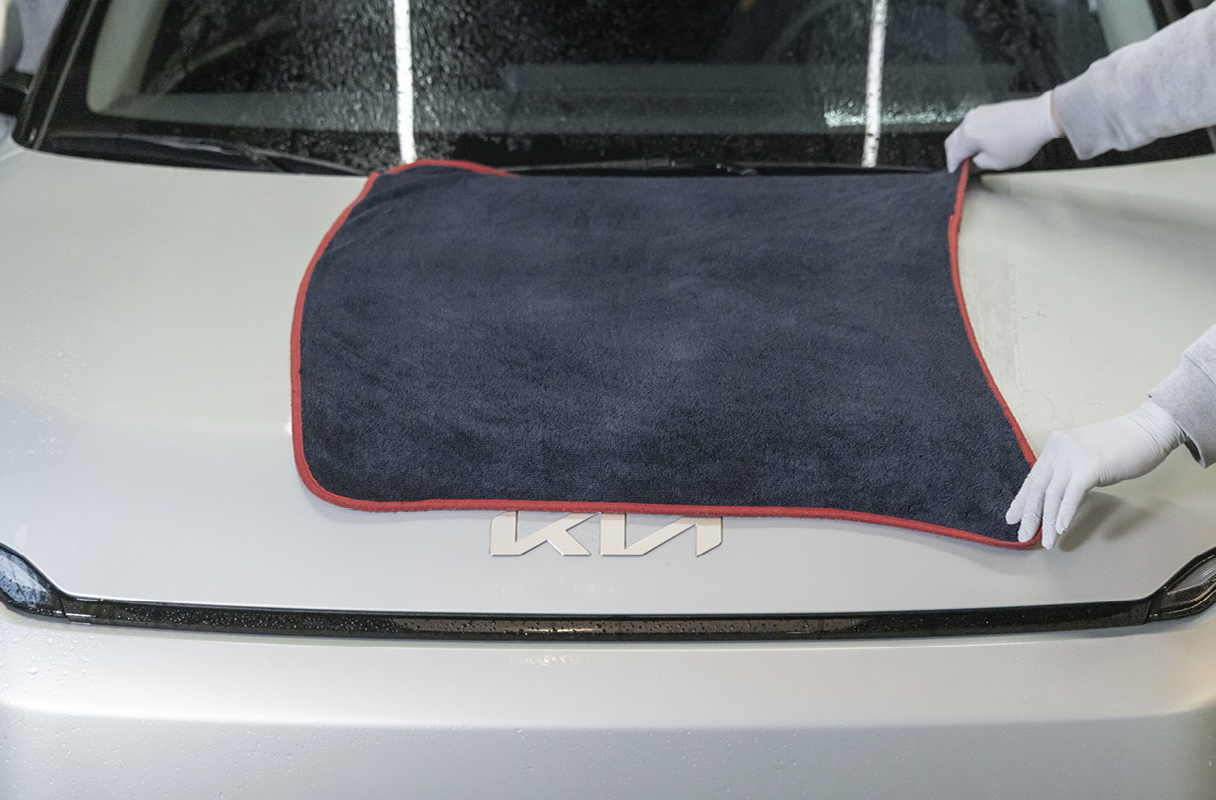
Drying the vehicle after washing may seem simple, but it requires careful attention to detail. Even the slightest remaining moisture can leave water spots on the surface. To ensure thorough drying, using a large towel is recommended, as it allows for efficient coverage of broad areas like the hood and roof in a single motion. A common technique for these sections is to spread the towel over the surface and gently pull it toward you. For maximum absorption, leave a slight slack when pulling, allowing the towel to soak up water more effectively.
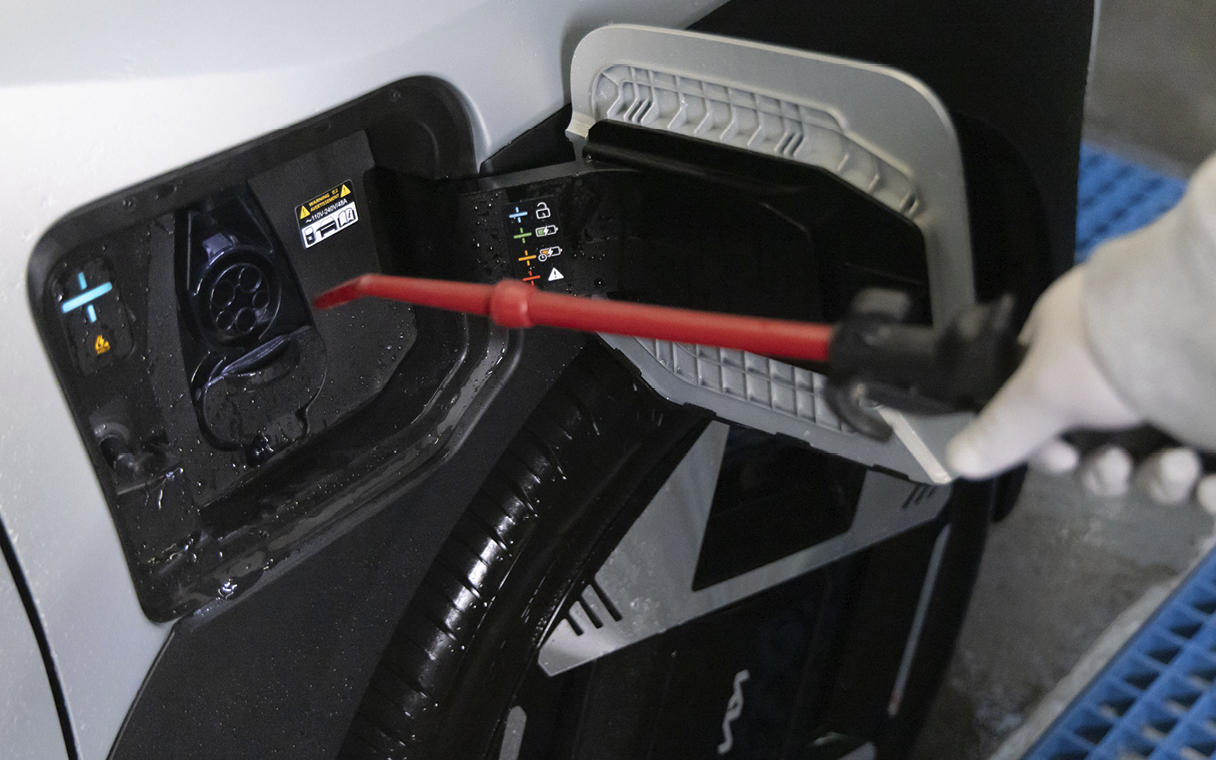
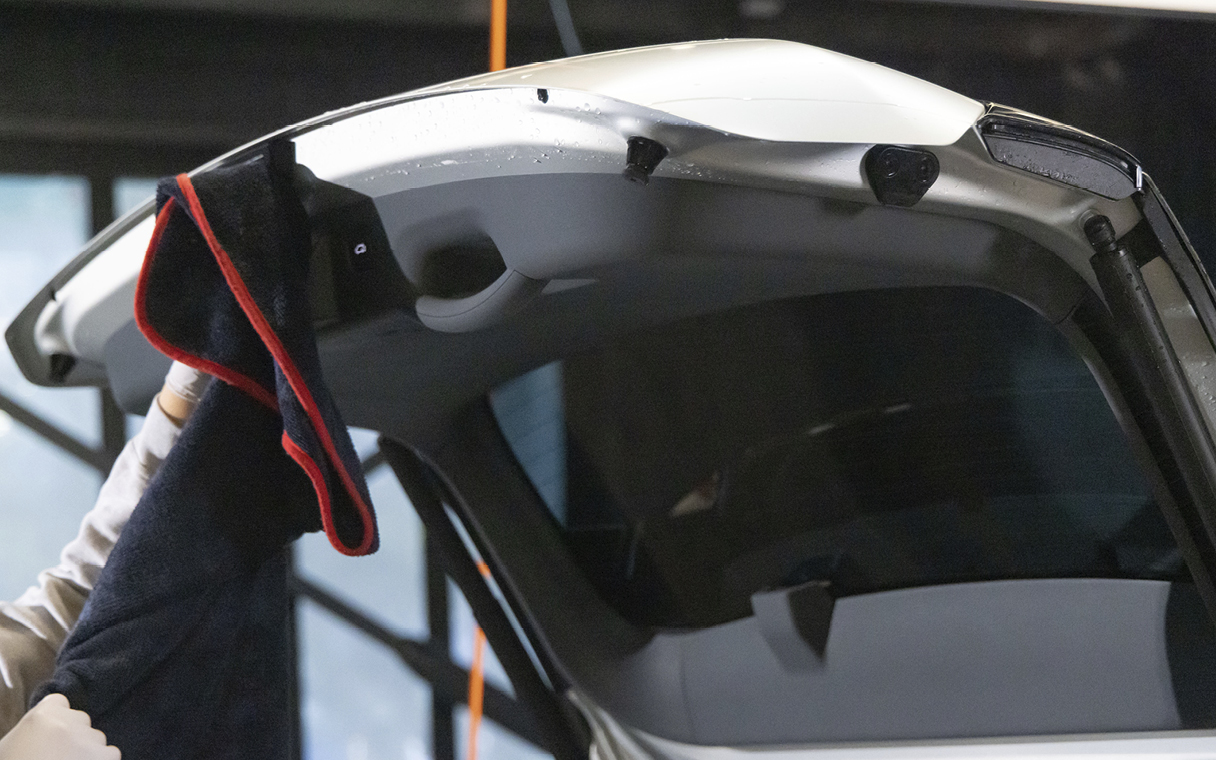
Removing hidden moisture from tight spaces is just as important. Water tends to accumulate in various areas, including the front grille, side mirrors, taillights, EV charging port (or fuel filler), and door or tailgate seams. A powerful blast of air from an air gun effectively dislodges trapped moisture, and following up with a drying towel ensures no droplets remain—leaving the vehicle spotless.
Once all moisture has been thoroughly removed, applying a protective coating to the paint is highly recommended. Not only does this shield the surface from scratches, but it also prevents contaminants from adhering too firmly, making future washes significantly easier.
For matte-colored vehicles, it is essential to use a specialized coating product. Conventional waxes and coatings are designed to enhance gloss and smoothness, which can have an adverse effect on matte finishes. As mentioned earlier, applying a conventional coating to a matte surface may cause it to seep into the textured clear coat, creating unwanted shine in certain areas.
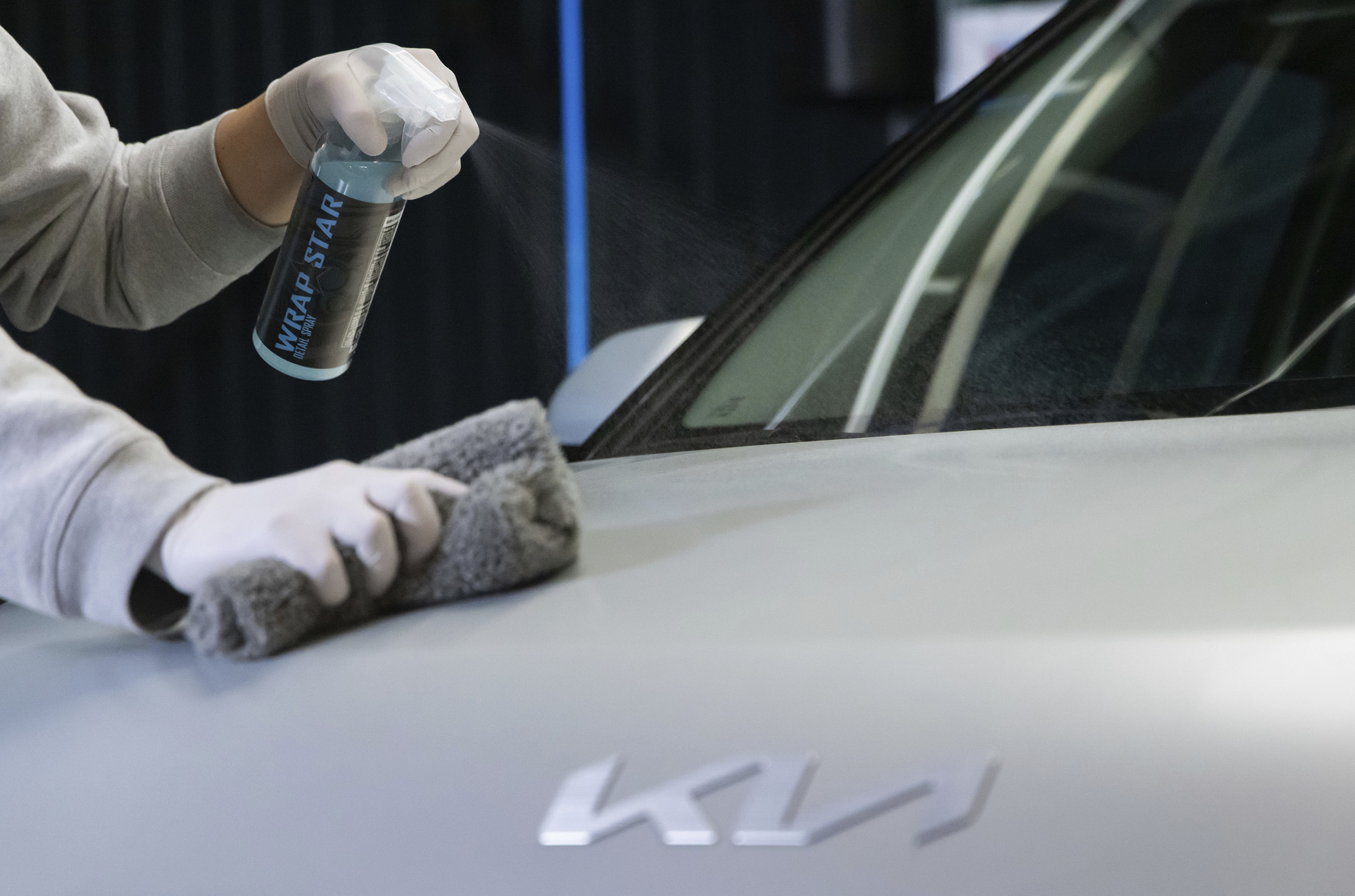
The coating process is straightforward. Evenly apply the product across the paint surface, then gently wipe it with a buffing towel. As with the main wash, there is no need to apply pressure—simply glide the towel over the surface to remove any excess. Once complete, allow the coating to dry for a short period before proceeding.
After washing, you may still notice fine swirl marks or stubborn grime on the paint surface. While glossy-finish vehicles can be treated with compounds or paint cleansers to remove such blemishes, these products should never be used on matte finishes. Most contain abrasives that wear down the clear coat, smoothing out its texture and turning the treated area glossy. Once the clear coat has been abraded, restoring its original matte finish is nearly impossible without repainting.
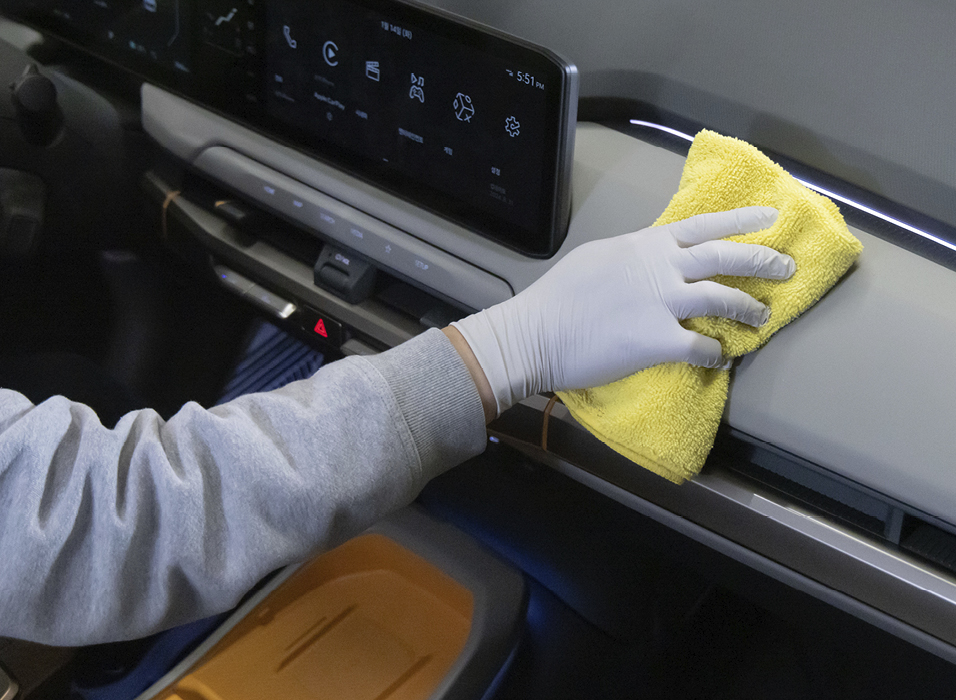
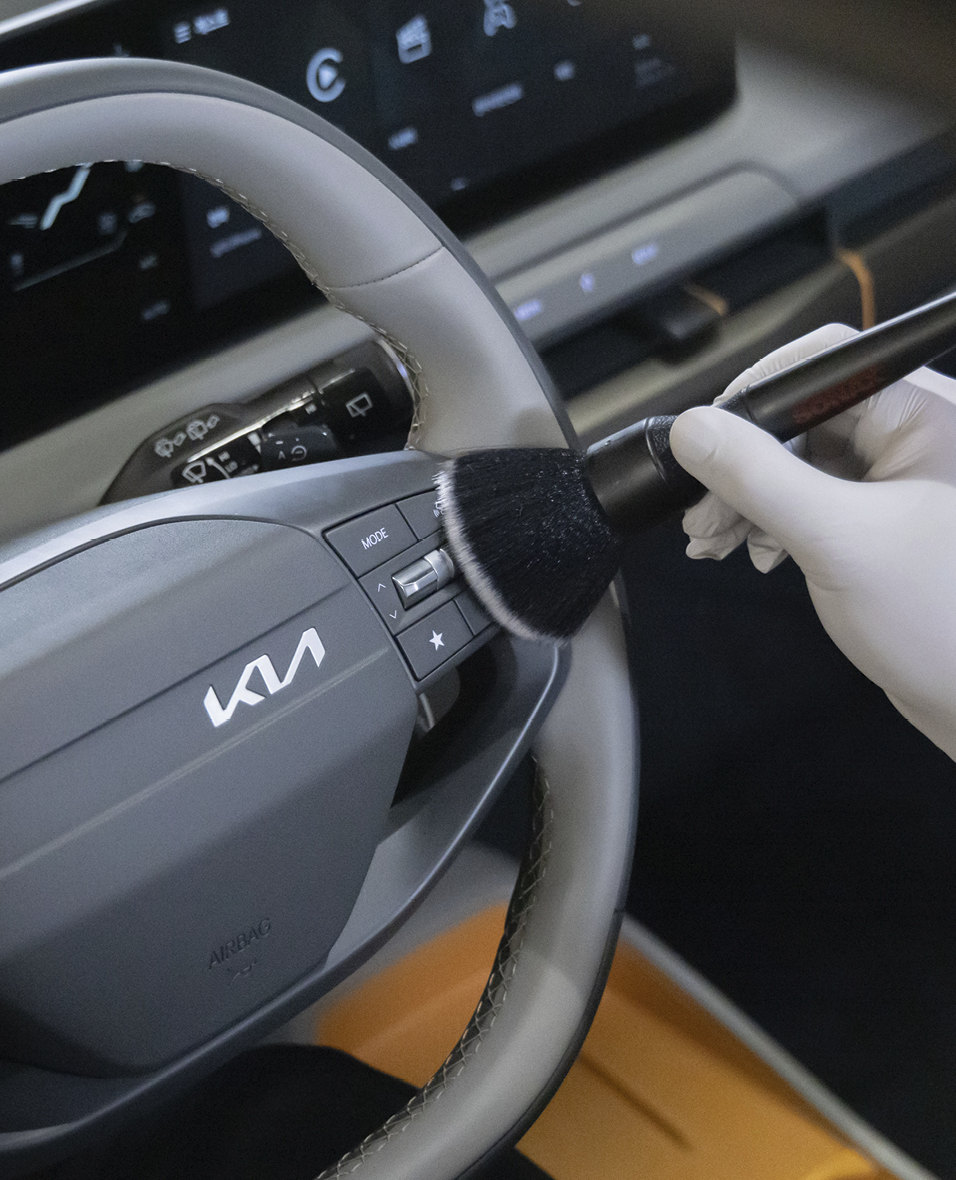
Since passengers remain inside the vehicle for the entire ride, keeping the interior clean is just as important as maintaining the exterior. Begin by vacuuming the floor to remove dirt and debris. When using a vacuum, take care to position the hose properly to prevent it from causing scratches on the painted surface.
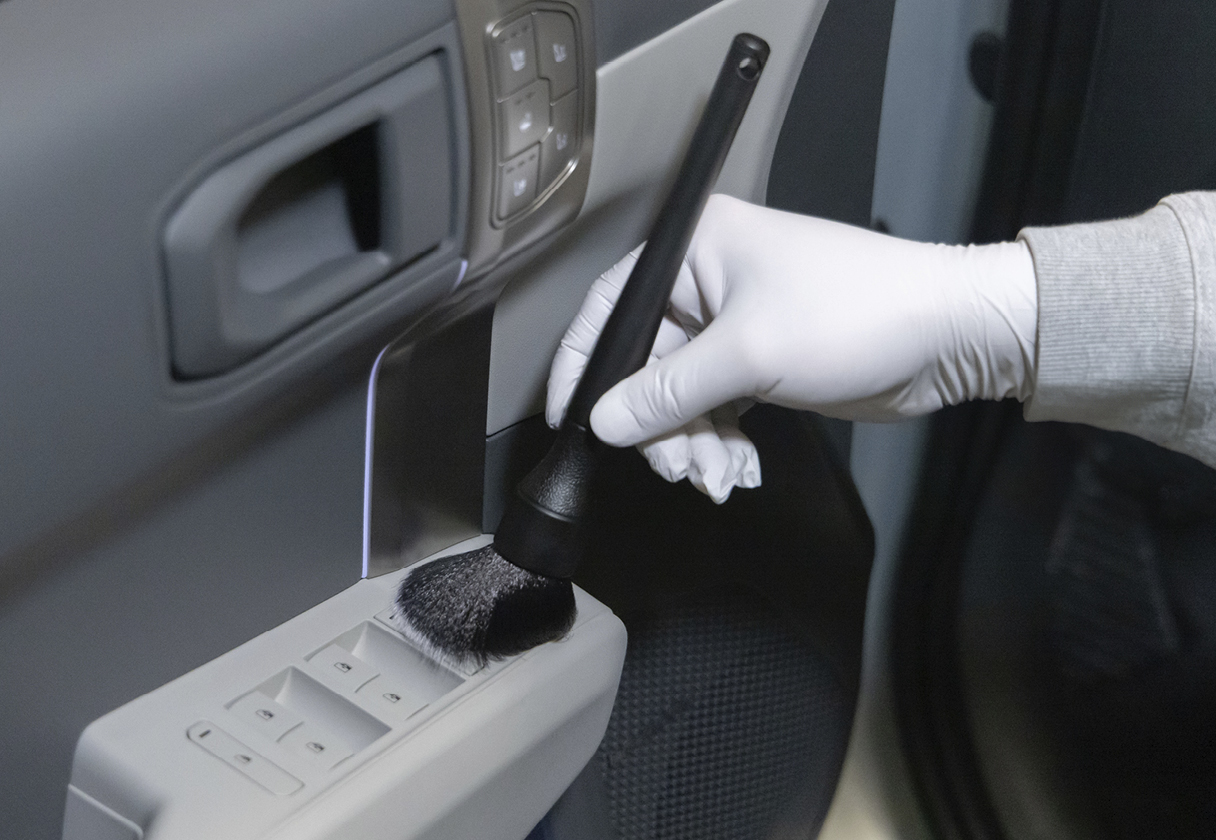
Since multi-purpose cleaners for painted surfaces require rinsing with water—something impractical for interiors—using interior-specific cleaning products is essential. For plastic and fabric surfaces, spray the cleaner directly onto the material and wipe it with a brush or towel. A soft-bristled interior brush is particularly effective for cleaning hard-to-reach crevices. To prevent overspray, apply the cleaner to the towel first before wiping.
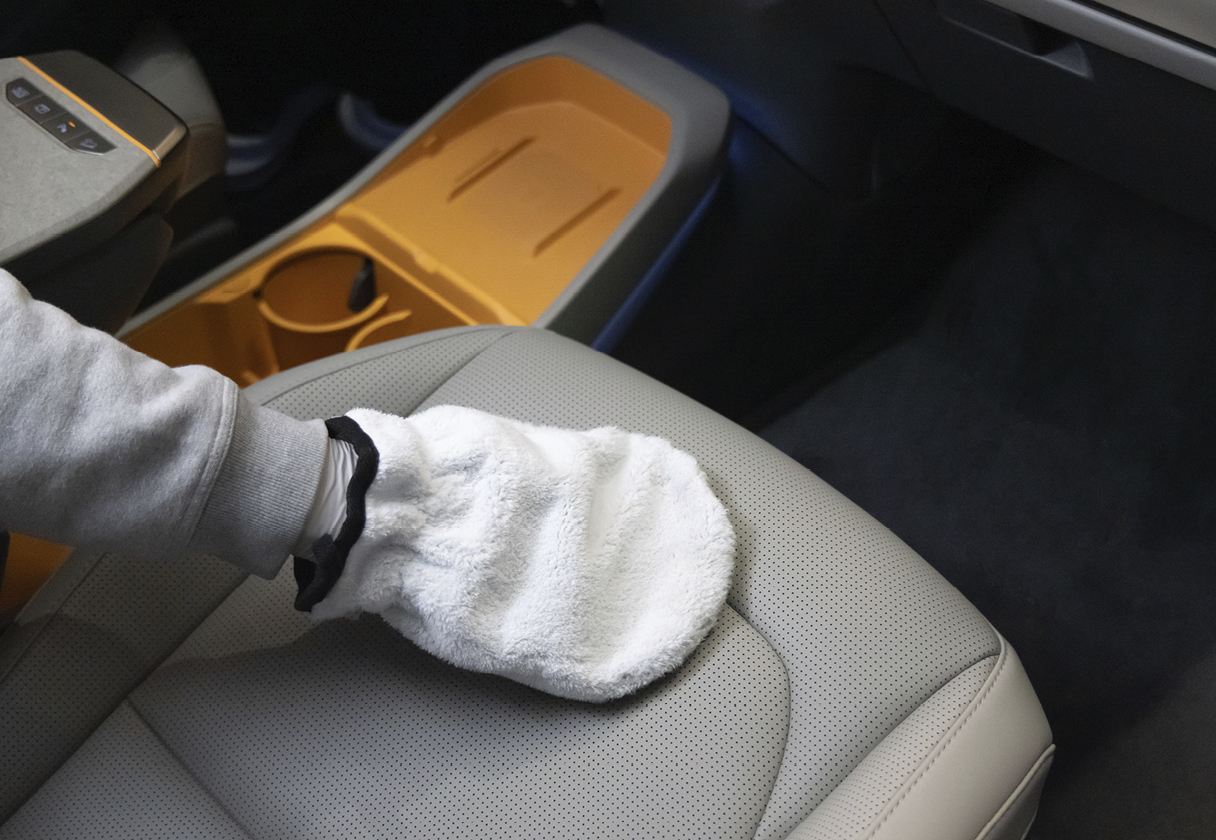
Leather seats require special care to preserve their soft texture and pristine appearance. Using a leather-specific cleaner with built-in conditioning helps prolong their lifespan. For best results, spray the cleaner onto a towel and wipe in gentle circular motions.

As we have seen, while the maintenance routine for matte-finish vehicles differs slightly from that of standard cars, it ultimately comes down to knowing which products to use and which to avoid. Matte-finish vehicles, with their rich colors, unique textures, and refined aesthetics, are becoming increasingly popular, particularly within Hyundai Motor Group's lineup. If you are drawn to the distinctive appeal of a matte finish, there is no need to hesitate—embrace your choice with confidence. A vehicle’s color is not only a fundamental design element that defines its character but also an expression of personal style. Since this is a car you will cherish for years to come, the most important thing is that it truly resonates with you.
Video by HMG Journal
Photography by Choi Jin-ho


A Journey to Perfect Relaxation with the Kia EV3
2025.02.25 8min read